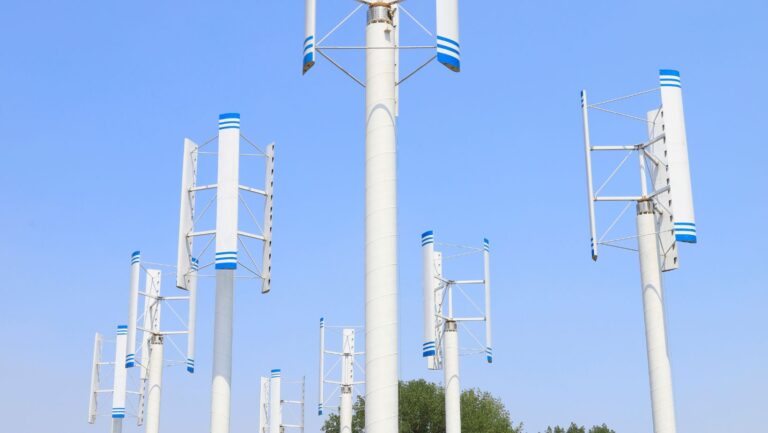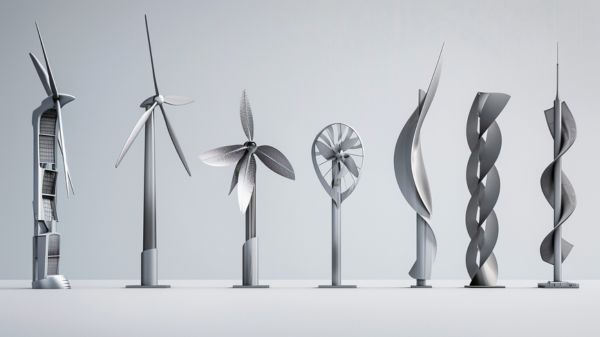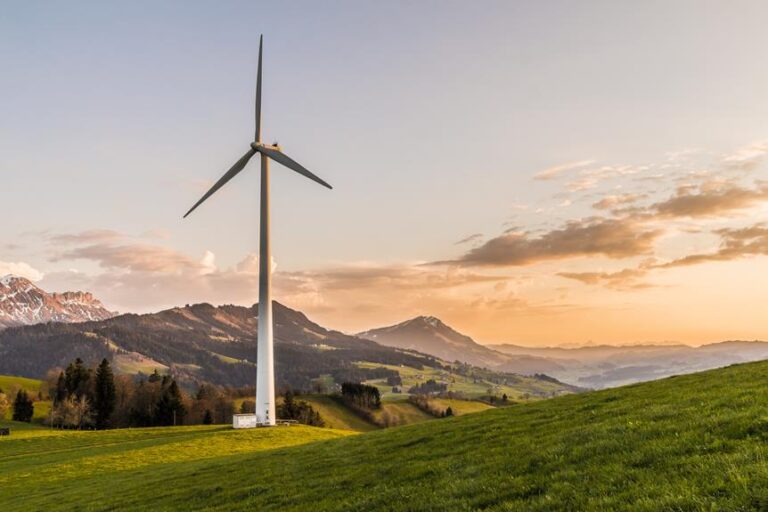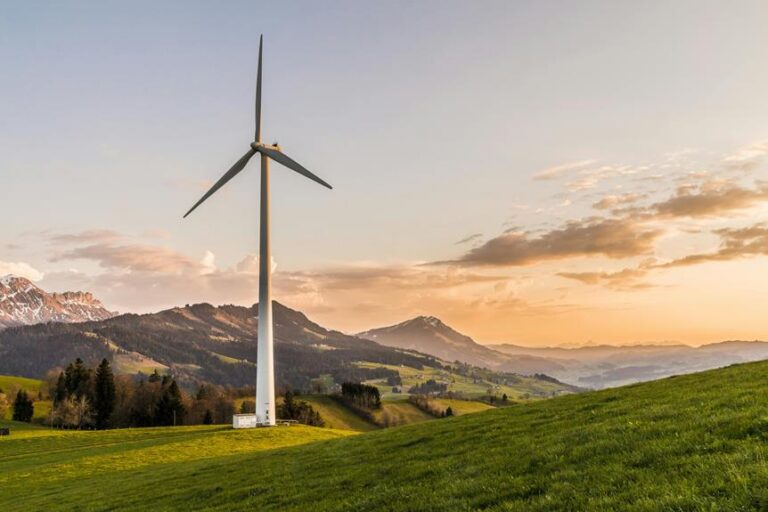7 Key Advantages of Grid-Connected Wind Power Systems
Imagine a world where you harness the power of the wind to reduce your energy costs, secure a reliable power supply, and lower your carbon footprint. With grid-connected wind power systems, this vision becomes a reality.
By seamlessly integrating with the grid, you gain increased energy independence and the potential for net metering. Plus, you have access to government incentives that make the transition even more beneficial. Discover the seven key advantages of this sustainable energy solution and unlock a brighter, greener future.
Reduced Energy Costs
One key advantage of grid-connected wind power systems is reducing your energy costs. By harnessing the power of wind to generate electricity, these systems offer a sustainable and cost-effective solution.
In terms of energy efficiency, grid-connected wind power systems are highly efficient in converting wind energy into usable electricity. This efficiency translates into significant savings on your energy bills.
Additionally, these systems contribute to renewable energy integration by providing a clean and reliable source of power to the grid. The integration of wind power into the existing energy infrastructure helps reduce reliance on fossil fuels and promotes a more sustainable energy mix.
Reliable Power Supply
Ensuring a reliable power supply, grid-connected wind power systems offer a sustainable and consistent source of electricity. By connecting to the electrical grid, wind turbines can provide uninterrupted power to consumers, reducing downtime and increasing overall reliability.
This is a significant advantage over off-grid wind power systems, which rely on energy storage systems and may experience intermittent power supply. Grid-connected wind power systems can deliver a consistent flow of electricity to meet the demands of residential, commercial, and industrial users, regardless of fluctuations in wind speed.
The integration of wind power into the grid allows for a more reliable and stable power supply, minimizing the risk of power outages and ensuring continuous access to electricity. With reduced downtime and uninterrupted power, grid-connected wind power systems play a crucial role in providing a dependable and sustainable energy solution.
Lower Carbon Footprint
To lower your carbon footprint, grid-connected wind power systems offer a sustainable and eco-friendly source of electricity. These systems have significant economic benefits while contributing to environmental sustainability.
By harnessing the power of wind, these systems generate electricity without emitting greenhouse gases, unlike conventional power plants that rely on fossil fuels. According to research, wind power systems can reduce carbon dioxide emissions by an average of 2,600 tons per year per megawatt of installed capacity. This reduction in emissions plays a vital role in mitigating climate change and improving air quality.
Additionally, wind power systems help to diversify the energy mix, reducing dependence on fossil fuels and promoting energy independence. Embracing grid-connected wind power systems isn’t only a smart economic decision but also a responsible choice for a greener future.
Increased Energy Independence
By connecting your wind power system to the grid, you can reduce your reliance on the traditional power grid and achieve enhanced energy independence. This means that you can generate a significant portion of your own electricity, reducing your dependence on external energy sources.
Reduced Reliance on Grid
You can achieve increased energy independence with a grid-connected wind power system through a significant reduction in reliance on the grid. By harnessing the power of wind, you can generate electricity on-site, reducing your grid dependency and achieving greater grid independence.
Here are two key advantages of a grid-connected wind power system:
- Energy Self-Sufficiency: With a wind power system, you can generate a substantial amount of electricity on your own. This reduces your reliance on the traditional power grid, making you less vulnerable to power outages or fluctuations in the grid supply. You can enjoy a continuous and reliable energy supply, even during grid failures.
- Excess Power Contribution: A grid-connected wind power system allows you to feed excess electricity back into the grid. When your wind turbines produce more energy than you consume, the surplus power can be sold back to the utility company, earning you financial benefits or credits. This not only reduces your dependence on the grid but also allows you to contribute to the overall energy supply in your area.
With reduced grid dependency and increased energy independence, a grid-connected wind power system offers a reliable and sustainable solution for meeting your energy needs.
Enhanced Energy Self-Sufficiency
Achieve greater energy independence with a grid-connected wind power system, allowing you to rely less on the traditional power grid. By harnessing renewable energy generation through wind turbines, you can establish a sustainable power supply that reduces your dependence on non-renewable resources and lowers your carbon footprint.
Grid-connected wind power systems enable you to produce electricity on-site, reducing the need for external energy sources. This enhanced energy self-sufficiency not only provides you with a reliable and continuous power supply but also offers financial benefits, as you can generate your own electricity and potentially sell any excess back to the grid.
Potential for Net Metering
With grid-connected wind power systems, you have the potential for net metering, which offers several advantages.
Firstly, net metering allows for cost-saving energy exchange, as excess electricity generated by your wind turbine can be fed back into the grid and credited to your account. This means that when your wind turbine produces more electricity than you consume, you can offset your energy bills or even earn money.
Secondly, net metering promotes increased integration of renewable energy sources into the grid, contributing to a more sustainable and resilient energy system.
Cost-Saving Energy Exchange
By implementing a grid-connected wind power system, homeowners can significantly reduce their electricity bills through the potential for net metering. Net metering allows homeowners to sell excess electricity generated by their wind power system back to the grid, effectively offsetting their energy consumption and reducing their overall electricity costs. This cost-saving energy exchange is made possible by the integration of energy storage and system efficiency.
Here are two key benefits of net metering:
- Reduced electricity bills: By generating their own electricity through wind power and selling excess energy back to the grid, homeowners can reduce their reliance on traditional energy sources and save money on their monthly electricity bills.
- Increased return on investment: The ability to earn credits for excess electricity produced by the wind power system can lead to a quicker payback period and increased return on investment for homeowners.
Increased Renewable Energy Integration
You can maximize the integration of renewable energy in your grid-connected wind power system through the potential for net metering. Net metering allows you to feed excess electricity generated by your wind turbines back into the grid, effectively turning your wind power system into a small-scale power plant.
This is made possible by smart grid technology, which enables bidirectional flow of electricity and seamless integration of renewable energy sources. By integrating your wind power system with the grid through net metering, you not only contribute to the overall increase in renewable energy generation, but also enhance grid stability.
The excess electricity generated by your wind turbines can be used by other consumers, reducing the reliance on traditional fossil fuel-based power plants and promoting a more sustainable energy mix.
Seamless Integration With the Grid
Grid-connected wind power systems seamlessly integrate renewable energy sources with the existing electrical grid. This integration offers several key advantages, including improved grid stability and efficient power transmission.
- Improved grid stability: Grid-connected wind power systems can help stabilize the grid by providing a consistent and reliable source of electricity. The variability of wind power can be managed through advanced forecasting and control systems, ensuring a stable supply of energy to meet demand.
- Efficient power transmission: By being connected to the grid, wind power systems can efficiently transmit electricity over long distances. This allows for the utilization of wind resources in remote areas, where the potential for wind energy generation is high. Moreover, the grid connection enables the smooth integration of wind power with other sources, such as fossil fuel and hydroelectric power plants, ensuring a reliable and diversified electricity supply.
Access to Government Incentives
Access to government incentives is a significant advantage of integrating grid-connected wind power systems, as it enables individuals and businesses to benefit from financial support and favorable policies.
Government support for renewable energy aims to promote the adoption of clean and sustainable energy sources, such as wind power. Financial incentives, in the form of tax credits, grants, and subsidies, play a crucial role in reducing the cost of installing and operating wind turbines. These incentives can significantly offset the initial investment and ongoing expenses, making wind power more economically viable.
Additionally, government policies can create a stable and predictable market for wind power, ensuring long-term profitability. By taking advantage of government incentives, individuals and businesses can’t only contribute to a greener future but also benefit financially from their wind power systems.
Conclusion
After examining the key advantages of grid-connected wind power systems, it becomes evident that this renewable energy source offers significant benefits.
Not only do these systems reduce energy costs and provide a reliable power supply, but they also contribute to lower carbon footprints and increased energy independence.
Furthermore, the potential for net metering and seamless integration with the grid make them even more advantageous.
By harnessing the power of wind, individuals and communities can take advantage of government incentives and pave the way towards a more sustainable future.






